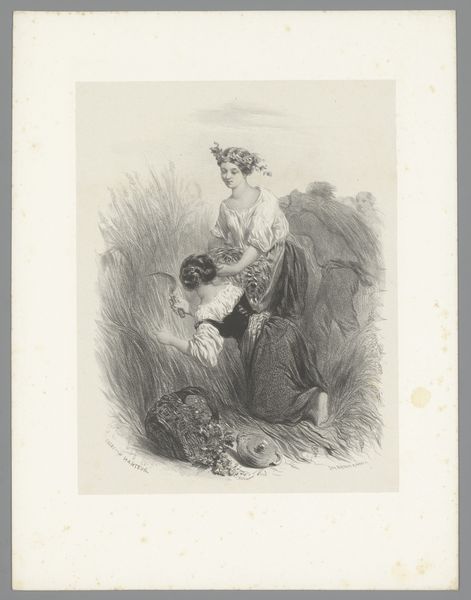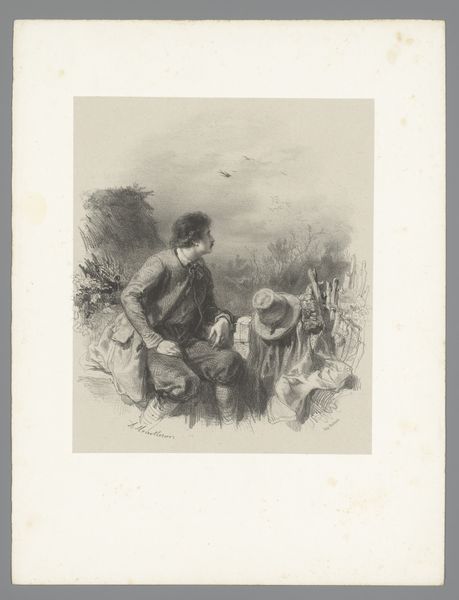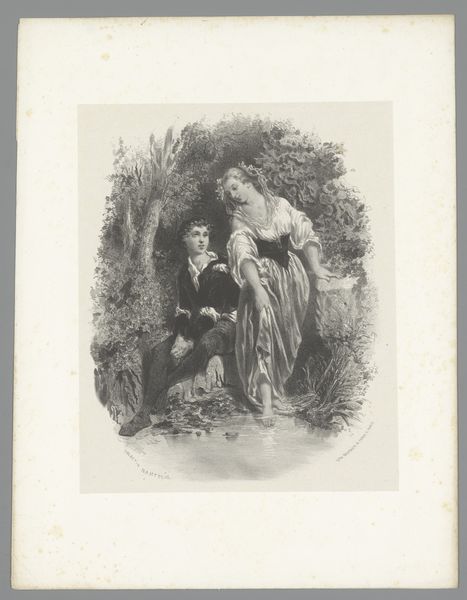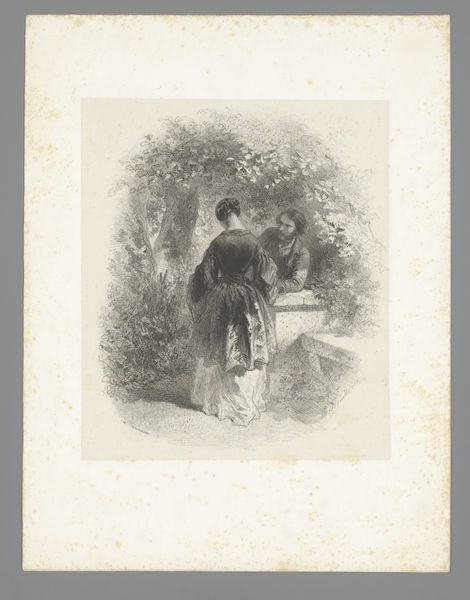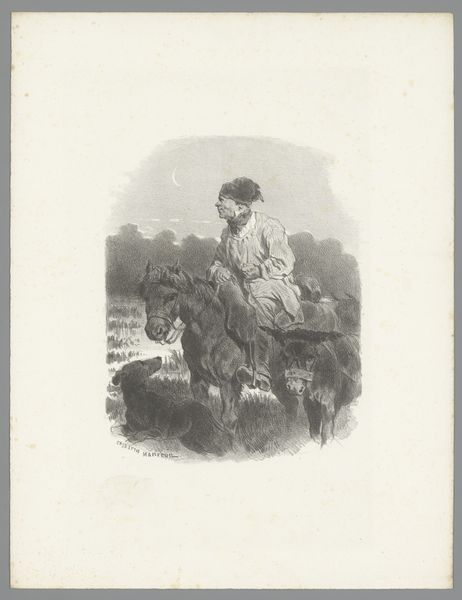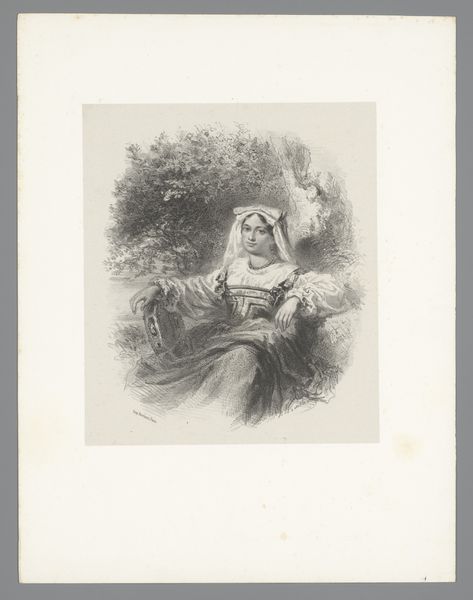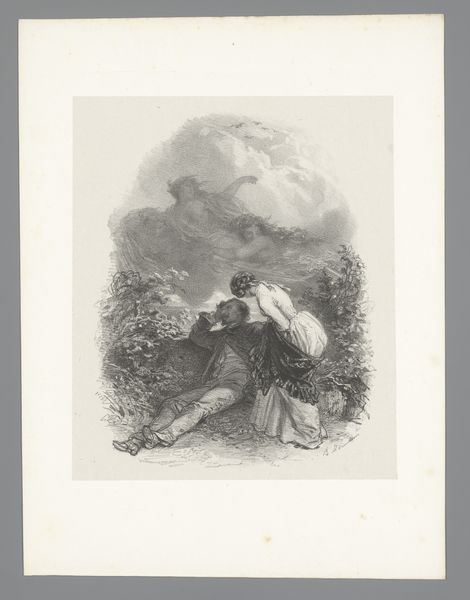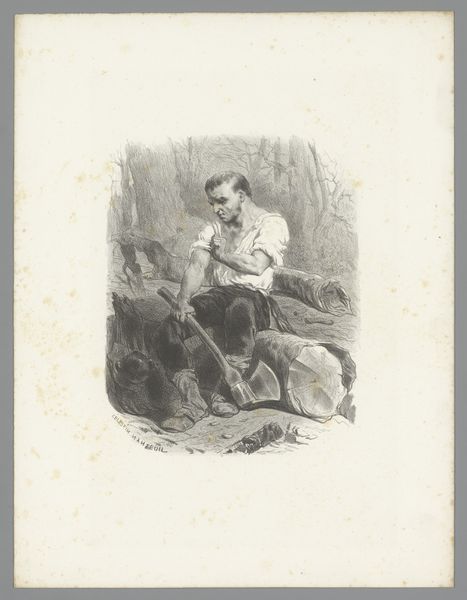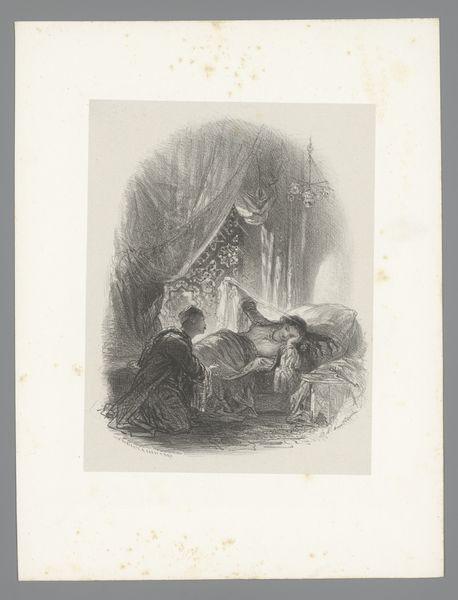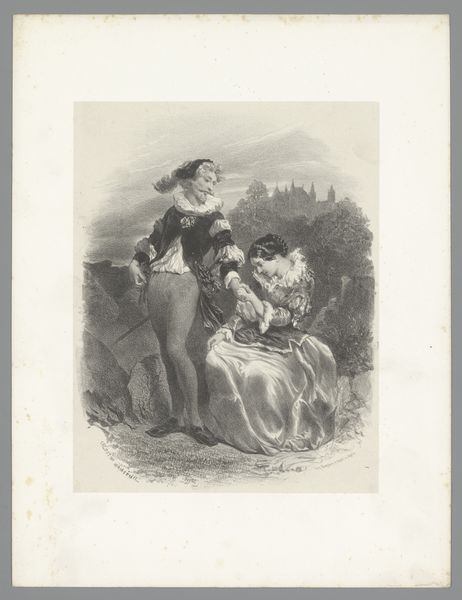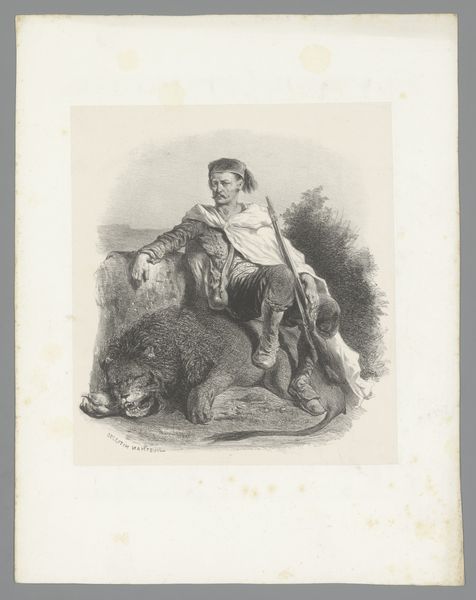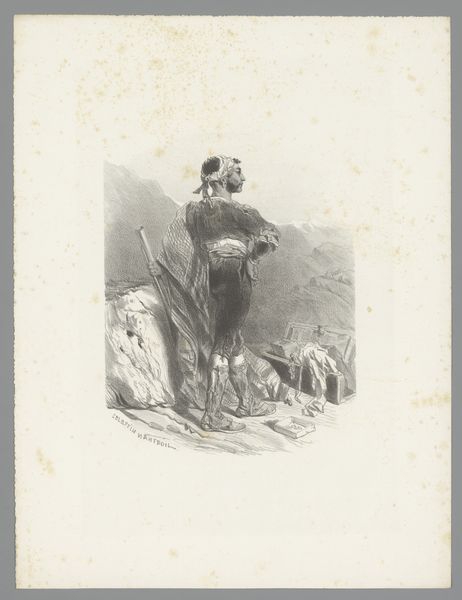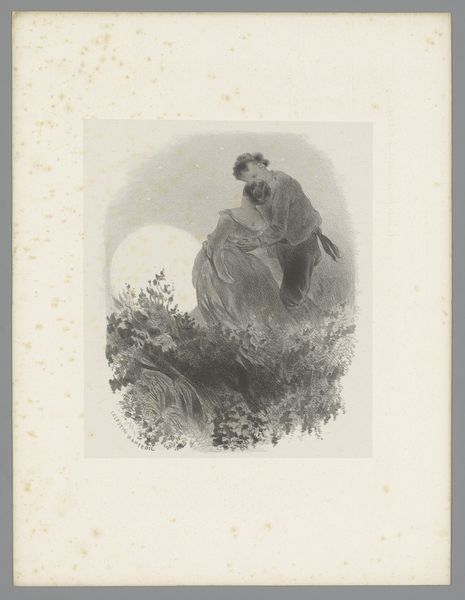
drawing, print, pencil
#
drawing
# print
#
landscape
#
figuration
#
romanticism
#
pencil
#
genre-painting
Dimensions: height 360 mm, width 272 mm
Copyright: Rijks Museum: Open Domain
Célestin Nanteuil made this print of a shepherd and his goats, using lithography, in the 19th century. The lithographic process is key to understanding this image. It is a printmaking technique based on the principle that oil and water don't mix. The artist would draw on a flat stone or metal plate with a greasy substance, then apply ink, which sticks only to the drawn areas. It's a relatively direct method, allowing for nuanced tonal variations, as we can see in the soft shading of the shepherd's face and the rendering of the goats' shaggy coats. Lithography democratized image-making in the 19th century. Unlike earlier forms of printmaking that required laborious carving, lithography allowed for faster, cheaper reproduction. This had a profound impact on visual culture, making images like this one accessible to a wider audience. The image romanticizes rural labor, yet the mode of its production—lithography—speaks to the rise of industrial capitalism and its complex relationship to older, more traditional ways of life. So, when we look at this print, we should appreciate it not just for its pastoral subject matter, but also for what it tells us about the changing landscape of art production in the 19th century.
Comments
No comments
Be the first to comment and join the conversation on the ultimate creative platform.
